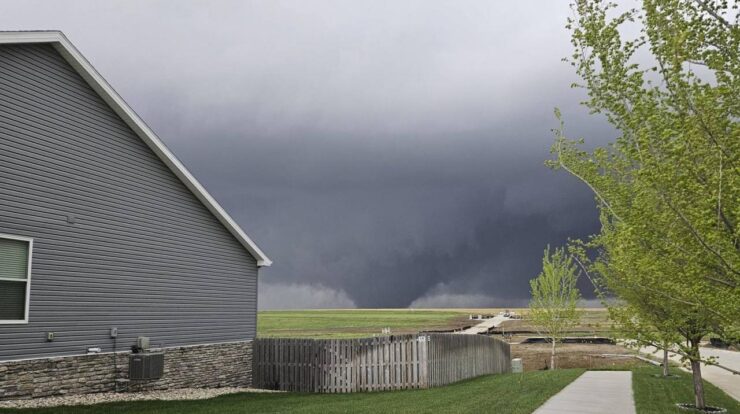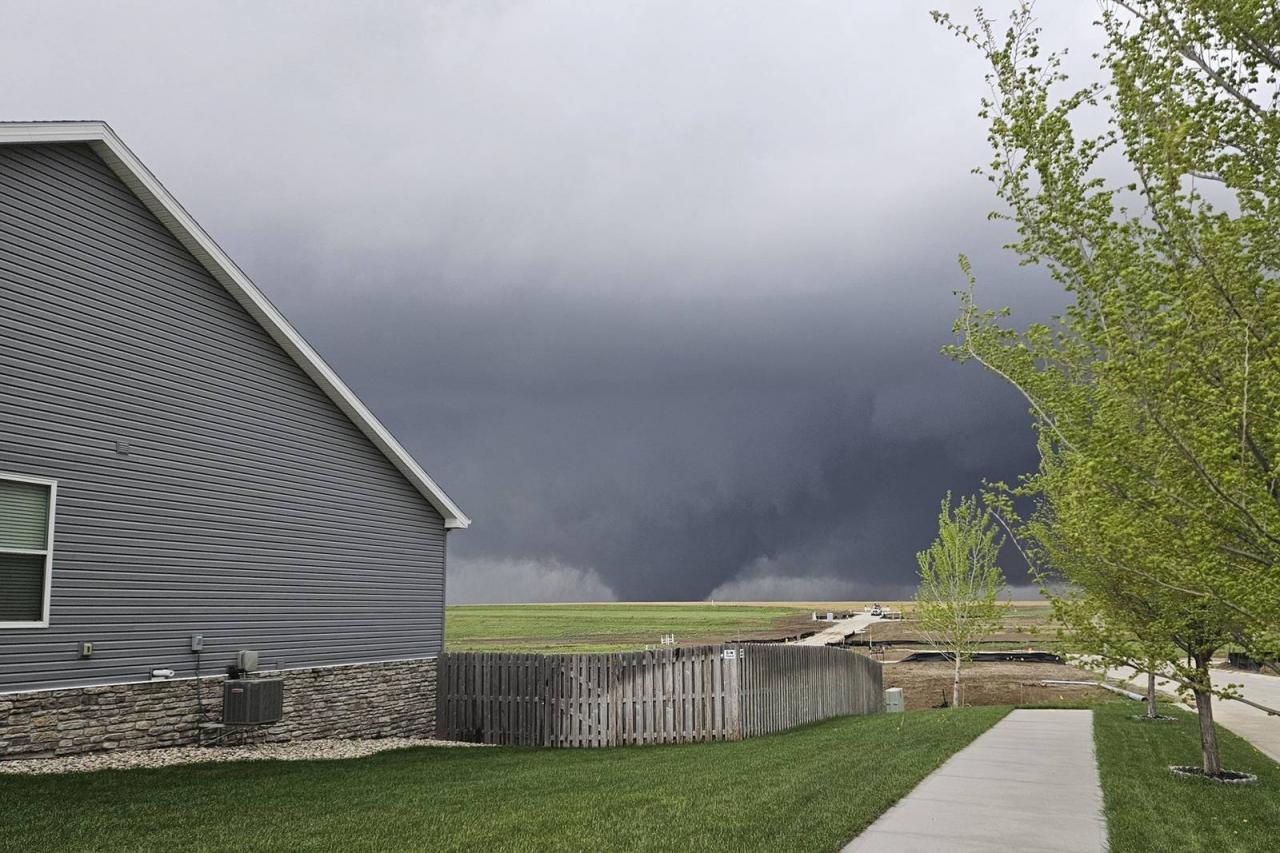
Tornadoes in Nebraska today are a serious threat to life and property, and it’s important to be aware of the risks and how to stay safe. This comprehensive overview will provide you with everything you need to know about tornadoes in Nebraska, from their history and climatology to safety tips and preparedness measures.
Nebraska has a long history of tornadoes, with some of the most notable occurring in the past century. The deadliest tornado in Nebraska history was the Hallam tornado of 1980, which killed 10 people and injured 60. In 2019, a tornado outbreak caused widespread damage across the state, including the city of Lincoln.
Historical Tornadoes in Nebraska
Tornadoes have been a significant part of Nebraska’s history, with numerous devastating events occurring throughout the state. Notable tornadoes include the Omaha Tornado of 1913, which killed 103 people and destroyed much of the city, and the Hallam Tornado of 2004, which had winds of up to 260 mph and caused widespread damage.
| Tornado | Date | Strength | Location | Casualties | Property Damage |
|---|---|---|---|---|---|
| Omaha Tornado | March 21, 1913 | F4 | Omaha | 103 | $3 million |
| Hallam Tornado | May 22, 2004 | F5 | Hallam | 0 | $20 million |
| Pilger Tornado | June 16, 2014 | EF4 | Pilger | 0 | $15 million |
Tornado Forecasting and Detection in Nebraska

Nebraska has a comprehensive system for forecasting and detecting tornadoes. Weather stations and radar systems provide real-time data, while spotter networks help to identify and track tornadoes. Despite these efforts, forecasting tornadoes remains challenging, and detection systems have limitations.Spotter networks play a vital role in tornado detection, with trained volunteers reporting sightings to the National Weather Service.
This information helps to verify radar data and provide more accurate warnings.
Tornado Safety and Preparedness in Nebraska

Being prepared for tornadoes is crucial in Nebraska. Having a tornado preparedness plan and an emergency kit is essential. During a tornado, seek shelter immediately in a basement or storm cellar. If outside, find a sturdy building or lie flat in a ditch.
| Scenario | Safety Measures |
|---|---|
| At home | Go to the basement or an interior room on the lowest floor. |
| In a car | Get out of the car and find a sturdy building or lie flat in a ditch. |
| Outdoors | Lie flat in a ditch or seek shelter in a sturdy building. |
Tornado Climatology in Nebraska
Tornadoes occur frequently in Nebraska, with an average of 50 tornadoes reported annually. They are most common in the spring and summer months and are most likely to occur in the eastern and central parts of the state.The risk of tornadoes in Nebraska is influenced by several factors, including the state’s location in Tornado Alley, its flat terrain, and its proximity to the Rocky Mountains.
Impacts of Tornadoes on Nebraska’s Environment
Tornadoes can have significant environmental impacts, including damaging vegetation, displacing wildlife, and altering landscapes. They can also create new habitats and contribute to the formation of wetlands.For example, the Hallam Tornado of 2004 created a new wetland area in its path, which has since become a valuable habitat for wildlife.
Economic and Societal Impacts of Tornadoes in Nebraska: Tornadoes In Nebraska Today

Tornadoes can have devastating economic and societal impacts. They can damage infrastructure, disrupt businesses, and destroy homes. The Omaha Tornado of 1913 caused an estimated $3 million in damage, while the Hallam Tornado of 2004 caused an estimated $20 million in damage.Tornadoes
can also lead to job losses, displacement, and mental health issues.
Tornado Research and Mitigation in Nebraska
Researchers in Nebraska are actively working to better understand and mitigate the impacts of tornadoes. Universities, government agencies, and private organizations are involved in research efforts.One successful tornado mitigation strategy in Nebraska has been the use of storm shelters. These shelters provide a safe place for people to take refuge during a tornado.
Conclusive Thoughts
Tornadoes are a powerful and destructive force of nature, but by being aware of the risks and taking precautions, you can help to stay safe. If you live in Nebraska, it’s important to have a tornado preparedness plan in place and to know what to do if a tornado warning is issued.
Top FAQs
What is a tornado?
A tornado is a violently rotating column of air that extends from the base of a thunderstorm cloud to the ground. Tornadoes are often accompanied by high winds, hail, and heavy rain.
What are the different types of tornadoes?
There are many different types of tornadoes, but the most common type is the supercell tornado. Supercell tornadoes are typically large and long-lived, and they can produce winds speeds of up to 300 miles per hour.
What is the Fujita scale?
The Fujita scale is a measure of the intensity of tornadoes. The scale ranges from F0 to F5, with F5 being the most intense. F0 tornadoes have winds speeds of up to 72 miles per hour, while F5 tornadoes have winds speeds of over 200 miles per hour.





